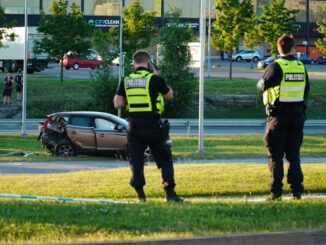
Car accidents in Ontario can be complex, especially when it comes to determining fault. Understanding how fault is assessed using the Fault Determination Rules (FDR) and how it differs between insurance claims and legal proceedings is essential for all drivers. This guide explores various accident scenarios, applies the FDR, and clarifies the implications of fault from both insurance and legal perspectives.
How Fault is Determined Using Fault Determination Rules (FDR)
The Fault Determination Rules in Ontario provide a structured framework for assigning fault in different types of car accidents. Here are some common scenarios and how fault is typically determined:
Rear-End Collisions:
- Scenario: Driver A is stopped at a red light. Driver B fails to stop in time and rear-ends Driver A.
- Fault Determination: Driver B is almost always considered at fault under the FDR, as drivers are expected to maintain a safe following distance and be able to stop safely.
Left Turn Accidents:
- Scenario: Driver A is making a left turn at an intersection with a green light. Driver B, approaching from the opposite direction, runs a red light and collides with Driver A.
- Fault Determination: Driver B is typically at fault for running the red light, despite Driver A making a left turn.
Parking Lot Incidents:
- Scenario: Driver A is backing out of a parking space. Driver B, traveling through the parking lot, collides with Driver A.
- Fault Determination: In parking lot accidents, fault can be shared or assigned based on the actions of each driver. Generally, the driver backing out of a space is often found partially at fault.
Multi-Vehicle Collisions:
- Scenario: A chain reaction collision occurs on a highway involving several vehicles.
- Fault Determination: The FDR may assign fault differently to each driver based on their actions leading up to the collision. For instance, the driver who initiated the chain reaction may bear a higher degree of fault.
Contributory Negligence:
- Scenario: Driver A is speeding, and Driver B changes lanes without signaling, causing a collision.
- Fault Determination: Both drivers may be found partially at fault for contributing to the accident. The degree of fault assigned to each driver would depend on the specifics of the situation.
Insurance vs. Legal Perspectives on Fault
While the Fault Determination Rules govern how fault is assigned for insurance purposes, fault in legal proceedings (common law) may be determined differently. Here’s how they compare:
Insurance Perspective:
- Impact on Premiums: Insurance companies use the Fault Determination Rules to assess fault and determine how premiums may be affected. Being found at fault in an accident typically results in higher insurance premiums at renewal.
Legal Perspective:
- Liability in Lawsuits: In civil lawsuits following car accidents, fault is determined based on common law principles. Factors such as negligence, duty of care, and causation are considered, which may result in different outcomes compared to fault under the FDR.
Examples Highlighting Differences in Fault Assessment
Example 1 – Intersection Collision:
- FDR Assessment: Driver A has a stop sign but fails to yield to Driver B, causing a collision.
- Insurance Perspective: Driver A is likely at fault for failing to yield, resulting in potential liability for damages and increased insurance premiums.
- Legal Perspective: In a lawsuit, fault may also be attributed to Driver B if they were speeding or otherwise failed to exercise reasonable care.
Example 2 – Rear-End Collision:
- FDR Assessment: Driver A stops suddenly without reason, and Driver B rear-ends them.
- Insurance Perspective: Driver B is usually at fault for failing to maintain a safe following distance, resulting in liability for damages.
- Legal Perspective: Depending on the circumstances, Driver A’s sudden stop may contribute to shared fault, altering liability in a lawsuit.
Steps to Take After an Accident
- Ensure Safety: Check for injuries and move to a safe location if possible.
- Exchange Information: Collect contact, insurance, and vehicle details from all parties involved.
- Document the Scene: Take photos of the accident scene, vehicle damage, and any relevant road conditions.
- File a Police Report: If necessary (injuries or damage exceeding $2,000), report the accident to the police.
- Contact Your Insurance Company: Notify your insurer and provide them with accurate details of the accident.
Conclusion
Understanding how fault is determined in car accidents using the Fault Determination Rules is crucial for all drivers in Ontario. While the FDR guide insurance assessments, fault in legal proceedings may differ based on common law principles. By familiarizing yourself with these rules and perspectives, you can navigate the aftermath of accidents more confidently. Remember to prioritize safety, document the incident thoroughly, and seek legal advice if facing disputes over fault or liability. Being informed empowers you to protect your interests and rights in the event of unforeseen accidents on Ontario’s roads.



